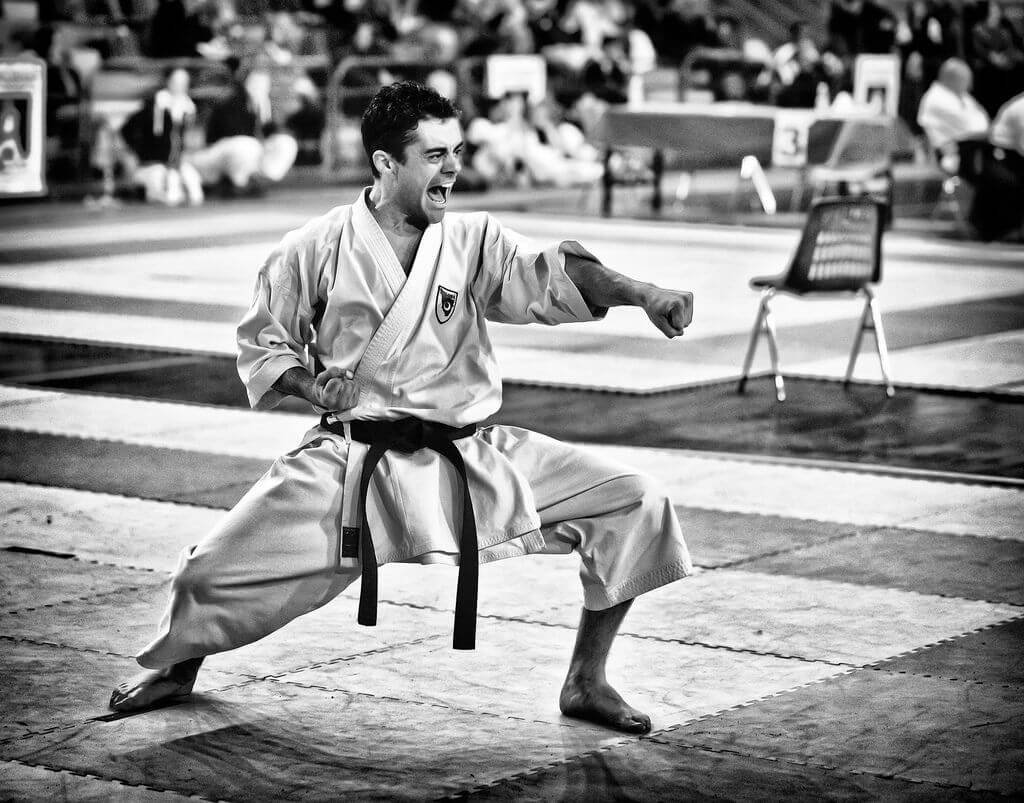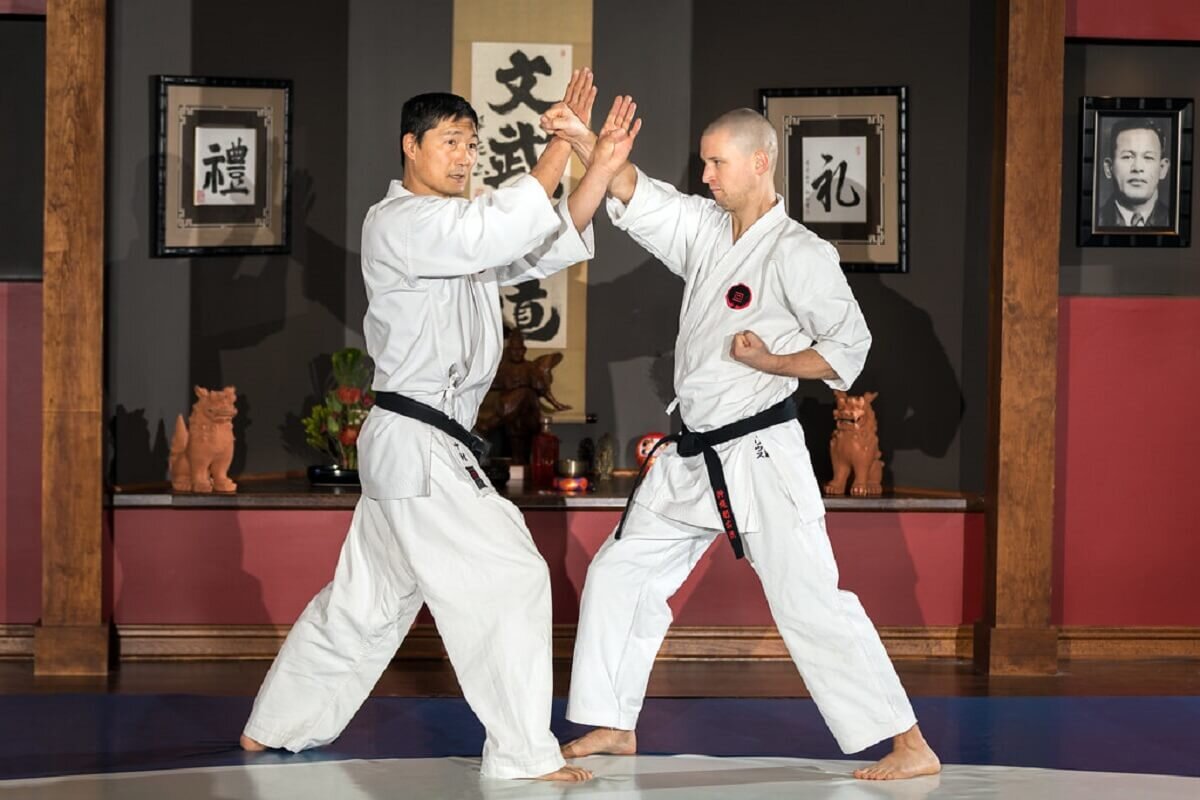The 4 Major Fighting Styles in Karate Explained
The Main Karate Fighting Styles Explained
Karate is one of the most widely-practised martial arts in the world, and it was first developed in Japan during the 17th century.
But how has Karate developed into different styles and what are their key differences?
Karate is known for its emphasis on strikes, encouraging opponents to use their hands and feet to deliver a huge variety of punches, kicks, open-handed blows and throws.
It is an effective way to defend yourself against an attacker, as well as a fantastic discipline to learn for mental and physical well-being. Many people take up Karate and other Martial Arts due to fitness benefits and the structured approach to training, it’s not all about kicking and punching people.
The mental side of Karate is something that many people cite as a reason for learning. Confidence, self control and heightened awareness are all common benefits of learning martial arts in general.
Many practitioners also find the challenge of improving oneself in a martial discipline to be something that drives commitment and ambition. Who hasn’t dreamed about gaining the prestigious ‘Black Belt’ in Karate?
A Brief History of Karate
This Japanese martial art was first developed by the people of Okinawa. The word karate means “empty hand” and it is essentially a fighting style that evolved from the principle of fighting without weapons.
However, later on in its development, different tools and weapons were added to the sport.
Weapons training can be found in many styles of karate, such as Kobudo, Shorin Ryu, Isshin Ryu and Goju Ryu among others.
The first style of karate, Shuri-te, was developed in the late 1600s as a form of self-defence against rival clans on the island.
Karate has evolved and it is spread among 4 major fighting styles, which have further derived many other fighting techniques and disciplines.
The Main 4 Karate Fighting Styles are;
Shotokan
Goju Ryu
Shito Ryu
Isshin Ryu
In this article, we will discuss each of these 4 major fighting styles in turn, before considering the subtypes and techniques derived from these important styles.
1. Shotokan
Shotokan is a traditional Japanese style of karate, first created by Gichin Funakoshi, an Okinawan martial artist who studied under Sōkon Matsumura and Anko Itosu in Japan.
Funakoshi studied many different martial arts styles and incorporated them into his system.
The Shotokan style of karate emphasises speed, power and flexibility. All of its techniques are designed to be performed quickly and powerfully by practitioners.
Shotokan Karate is a style of karate that is characterized by its strong, linear techniques and deep stances. It is considered to be one of the most traditional and classical styles of karate.
Key characteristics of Shotokan Karate:
Strong, powerful strikes: Shotokan Karate emphasizes the use of strong, linear techniques such as the shuto (knife-hand strike) and the uraken (backfist strike). These attacks are delivered with speed, power, and accuracy.
Deep stances: Shotokan Karate is known for its use of deep, stable stances such as the zenkutsu-dachi (front stance) and the kokutsu-dachi (back stance). These stances help to provide a solid base for powerful movements, as well as providing solid balance and stability.
Emphasis on kihon (basics): Shotokan Karate places a strong emphasis on mastering the basics, such as proper stance, breathing, and body mechanics. These basics are considered to be the foundation of the Shotkan Karate and are drilled repeatedly in order to improve muscle memory and develop the proper technique.
Kata (forms): Shotokan Karate is also known for its use of kata, which are prearranged patterns of techniques that are practised solo. Katas are used to teach and reinforce technique, as well as to keep developing power, speed, and balance.
Emphasis on discipline and respect: Shotokan Karate places a strong emphasis on discipline and respect, both in the dojo and outside of it. This includes bowing to enter and exit the dojo, and showing respect to one's sensei and training partners.
Strong physical fitness and conditioning: Shotokan Karate practitioners are encouraged to develop strong overall physical fitness, as well as good cardiovascular conditioning. Through the repetition of techniques and kata, students develop the physical attributes required for this common form of Karate.
2. Goju Ryu
Goju Ryu karate focuses on the development of both physical and mental strength, which makes it an excellent choice for those who wish to defend themselves in real-life situations.
This style was developed by Chojun Miyagi, a student of Anko Itosu.
Miyagi was born in Okinawa, but he moved to Japan after World War II. In Japan, he perfected the Goju Ryo style of fighting.
The name “Goju” means “hard soft” or “yang-yin.” It is a hard style of karate that incorporates many soft techniques and movements.
This form of karate uses the legs, hips and waist to generate power in its punches, kicks and blocks.
The style also incorporates techniques from other martial arts such as traditional Chinese Kung fu and techniques from Okinawan weapons.
Goju-ryu karate also places a strong emphasis on the development of a strong and flexible body, as well as a clear and focused mind.
Goju-ryu is a complete martial art, which includes strikes, kicks, grappling, joint locks, throws and pressure points.
One of the most distinctive features of Goju-ryu karate is the kata "Sanchin", which is considered the foundation of the Goju-ryu system. This kata is typically slow, with hard, tensed movements and breathing, which is said to help develop internal power.
Gujo Ryo is typically practised by students who are looking for a less aggressive form of self-defence training, but still want to learn how to use martial arts as a means of personal development and physical growth.
Goju Ryu has many different variations, including Kobudo Goju Ryu.
This system of karate also uses sticks, knives, swords and other weapons from traditional Okinawan Kobudo, Shinko-ryu, Nihon ryu and Ishinryu.
3. Shito Ryu
Shito-ryu is a style of karate that was founded in 1939 by Kenwa Mabuni. The style is characterised by its combination of techniques from several different karate styles, including Shuri-te, Naha-te, and Goju-ryu.
One of the key characteristics of Shito-Ryu is its emphasis on the use of kata, which are pre-arranged forms that are used to practice techniques and movements.
The style includes a wide variety of kata, many of which were developed by Mabuni himself, and which cover a wide range of techniques including strikes, kicks, blocks, throws, and joint locks.
Another important aspect of Shito-Ryu is its focus on the use of both hard and soft techniques.
The style includes a variety of powerful strikes and kicks, as well as softer techniques like joint locks and pressure points, which can be used to control or subdue an opponent.
Shito-Ryu also emphasizes the use of breathing techniques, which are believed to help practitioners develop power and control over their movements.
In addition to traditional karate techniques, Shito-Ryu also incorporates elements of other martial arts, such as jujutsu, which can be used to counter and neutralize an opponent's attack.
Shito-Ryu is also notable for its emphasis on competition and sport, with the objective of kumite (sparring), which allow many practitioners to hone skills in a real-life application.
Although it is a fighting style more focused on empty-hand strikes, Shito Ryu students learn different techniques and strategies for fighting with tools and weapons.
A student may also learn how to use weapons in Shito Ryu, including the wooden sword (bokken) and other weapons.
4. Isshin Ryu
Isshin-ryu is a style of karate that was founded by Tatsuo Shimabuku in the 1950s.
The style combines elements of Shuri-te, Naha-te, and Goju-Ryu karate, and is known for its powerful strikes and fast, flowing movements.
One of the main characteristics of Isshin-ryu is its emphasis on the use of body mechanics to generate power in strikes.
Students of this type of Karate are taught to use the hips, legs, and core muscles to generate power, rather than relying on arm strength alone.
This gives Isshin-ryu a distinctive, flowing look, and allows practitioners to deliver powerful strikes with minimal effort.
Another key characteristic of Isshin-ryu is its focus on the use of both empty-hand and weapons techniques.
The style includes a variety of traditional karate kata, as well as kata that incorporate the use of weapons such as the bo staff, sai, and tonfa.
These weapons are believed to help those training to develop the ability to defend against armed opponents and to develop greater dexterity and control of their movements.
Isshin-ryu also places a lot of emphasis on sparring and self-defence training which is an important aspect of the practice of the style.
One of the unique aspects of Isshin-ryu is the incorporation of elements of Okinawan weapons, such as bo and sai.
Overall, Isshin-ryu is a well-rounded and powerful style of karate that incorporates elements of several different karate styles, as well as weapons techniques. It's a style that requires dedicated practice in order to master it and gain proficiency.
It has some similarities with Taekwondo, but the latter has a wider variety of kicks, and practitioners don’t use their hands as much.
Isshin Ryu has many variants, including:
Shorin Ryu
Kobayashi Shorin-ryu
Naihanchi Shodan
Isshin Ryu Jujutsu and Aikido
Isshin Ryu Kempo Koshu Dojo
Isshin Ryu Kenpo Kai
Naihanchi Nidan







